Showing 211–220 of 384 results
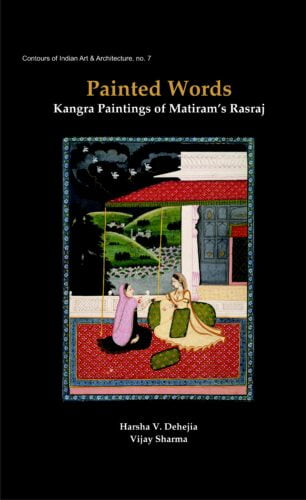
Matiram’s sonorous poetry embellished by Purkhu’s sensuous imagery, transport us into the rarefied realm of the Rasraj, where romance interwoven with poignancy, bring alive the emotion-laden shringara rasa. Both lyrics and imagery have been seemlessly sculpted into visual poetry.
No celebration of ritikavya can be complete until we have enjoyed the sonorous poetry of Matiram and the sensuous images of Purkhu.
With well sculpted words and lyrical rhythms Matiram takes us into the rarefied world of the nayak and the nayika, their amorous exchanges, the sensuality of loving glances, the charged moments of romantic feelings, the heart throb of belonging, the poignancy of longing and above all the fulfilment of desire.
Line by line and doha after doha, Matiram leads us into the emotionally charged world of shringararasa and for those of us who are chastened by harishringara we go from one level to another till we hear the flute of Krishna.
And when we find that these sonorous words of Matiram have been brought alive by none other than Purkhu and his school of painting under the patronage of Sansar Chand of Kangra our joy is doubled and Matiram’s words become visual poetry.
In the hands of Purkhu words become lines, emotions take on a colour and desire becomes palpable through the magic of his kalam.
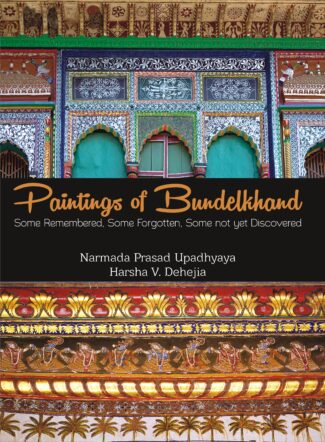
This volume presents meticulous deliberations on the mural paintings of Bundelkhand. These murals — a living art, more democratic and decidely popular — were the artistic idiom of Bundelkhand. It reminds us a truth that the paintings of Bundelkhand are half remembered, half forgotten and many yet to be discoverd.
This volume, a visual journey, through its meticulous deliberations on the wall paintings and miniature paintings of Bundelkhand makes us reminisce the footfalls of valiant Bundella kings, ankle bells of elegant court-dancers, evocative poetry of mahakavi Kesvadas and the brilliant artistic skills of mural painters and many other historical events. These find their excellent expressions beyond the palaces of Orchha and Datia, and in many jagirs and thikanas such as Rehali, Madanpur, Chhatarpur, Narsinghgarh, Ajayagarh, Todi Fatehpur, Samthar, Jhansi and Rannod as well. A glimpse of Malwa painting is a value-add.
The murals, a living art, more democratic and decidedly popular, were the artistic idiom of Bundelkhand. It was art for the raja and the praja, depicting not only Puranic stories, but also the regal affairs and the day-to-day life of ordinary people.
Despite the fact that time, the vicissitudes of weather and vandalism have taken their toll on the murals, a cultivated aesthete can restore life in them. The book candidly reminds us a truth: The paintings of Bundelkhand are half remembered, half forgotten and many yet to be discovered.
Thus, this book should inspire art connoisseurs, art historians, art students, and laymen alike, paving the way for further researches and studies on the forgotten legacies of Bundelkhand.
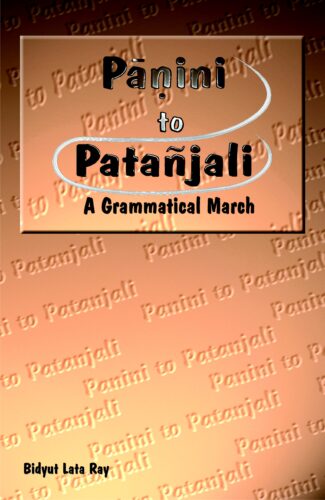
The volume presents scholarly essays studying the origin and evolution of Sanskrit grammar in ancient India, focusing on the monumental works in Sanskrit grammar, the Astadhyayi of Panini, the Varttikas of Katyayana and the Mahabhasya of Patanjali and their impact on the Sanskrit grammatical tradition.
The book presents scholarly essays examining the origin and evolution of Sanskrit grammar in ancient India from the time of Panini to Patanjali. It focuses on the monumental works in Sanskrit grammar, the Ashtadhyayi of Panini, the Varttikas of Katyayana and the Mahabhashya of Patanjali and the impact of these on the Sanskrit grammatical tradition. The essays critically analyse the Paninian system of Sanskrit grammar: its style and technicalities and particularly technical terms and devices used in the Ashtadyayi. Discussing, chronologically, the systems of grammar that emerged after Panini, they study the style and system of the Varttikas and the unique contribution of Katyayana in incorporating the element of philosophy of language interpreting difficult words in the Ashtadyayi on the basis of philosophical doctrine. They enumerate the tradition and technique of Patanjali: the style, language, logic, semantics, and scientific interpretation of his sutras and emphasise the importance of the Mahabhashya as the basis of post-Paninian Sanskrit grammar systems. There are also discussions on the dates of Panini and Patanjali. Throughout, the authors refer and quote from the works of these masters and other ancient Indian texts as well as from commentaries and sub-commentaries, supplements, logical interpretations and arguments on their writings and the system of Sanskrit grammar. The volume will interest and benefit scholars and researchers on ancient Indian grammar and linguistics in particular.
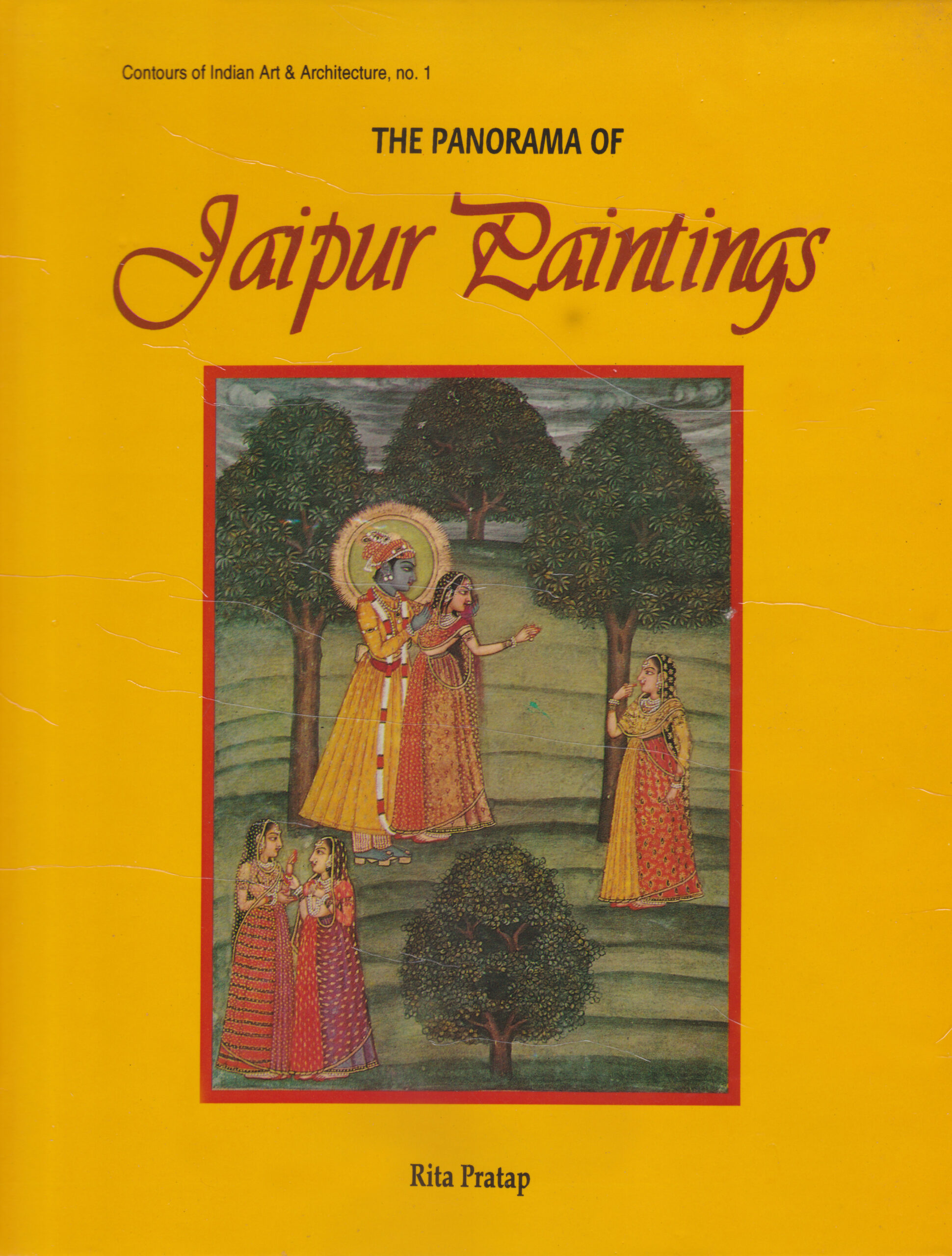
The book offers an exclusive study of the Jaipur School of Miniature Painting, in all its different articulations with focus on its historical evolution, style, form, motifs, artists and its linkages with other forms of creative expression.
Over the centuries, Indian art tradition came to have its differentiative regional, even local, specificities. For instance, the Jaipur School of Painting. Isolating itself from other Rajasthani genres like Mewar, Bikaner or Bundi, the Jaipur school set out its independent, distinctive identity, sometime during the early years of the 18th century. Historically, it was the time when the once-glorious Mughal empire was beginning to disintegrate and many of its court painters discovered, in Jaipur, a conducive haven under the generous patronage of Sawai Jai Singh (ad 1699-1743). As the capital of Rajasthan, the erstwhile Rajputana, Jaipur evokes memories of Rajput chivalry, and legendary romance. And it unmistakably represents the beautiful in art and the magnificent in architecture leave alone its fabulous cultural traditions. The School of Painting that thrived has here for over 150 years since Jai Singhs time, covers a whole diversity of themes: both sacred and secular, evolving a veritable panorama of contemporary life and culture. And yet collectively, notwithstanding their exposure to the earliest character of Mughal art, Jaipur miniatures are steeped in tradition drawing inspiration from Indian mythology, epical/classical literature, and folklore. For the first time, Dr. Rita Pratap offers an exclusive study of the Jaipur School of Miniature Painting, in all its different articulations with focus, among other aspects, on its historical evolution; its style, forms and motifs; its artists and ateliers; and its linkages with other forms of creative expression: literature, music, sculpture, dance. For her meticulous analysis she has drawn on the miniatures from private collections and museums around the world. Besides including bibliographic references and a glossary of non-English words, the book is embellished with representative specimens of Jaipur miniature paintings, exquisite figures and photographic reproductions in colour.

This book is a tale centred on the theme of the philosophic ideals and teachings of Vedanta. The story is an interesting account that is not only philosophical but also touches the emotions of the heart. It conveys the deeply founded truths of Vedanta in a simple manner.
This book is a tale centred on the theme of the philosophic ideals and teachings of Vedanta. With a first-person narrative style, it begins with the narrator’s decision to spend the third of the four asramas, the vanaprastha stage of life, in Madurai, the abode of Goddess Meenakshi which has inspired devout scholars and poets for centuries. The tale is an account of the narrator’s study of the philosophy of non-dualism or Advaita, as propounded by masters such as Sri Sankara and Ramana Maharshi, under the guidance of his guru Sankara Shastri. It reveals the nature of the Vedanta philosophy and its significance in understanding the meaning of life and the strange nature of human condition, in attaining peace and bliss in one’s own being and in contributing to harmony and integration in the country. It discusses aspects of creation of the universe and of life, the world and nature around us and the sufferings and pleasures as experienced by humans from a Vedantic perspective.
The story is an interesting account that is not only profoundly philosophical but also touches the emotions of the heart. Readers will be fascinated by this interesting and profound story that conveys the deeply founded truths of Vedanta in a simple manner.

Krishna Steals the Parijata (Parijataharana) tells the story of Krishna forcibly taking away Parijata from Indra to make Satyabhama happy, which finds expression in the paintings of different kalams Chamba, Palam, Early Kangra, Mature Kangra, Bundi, Bikaner and Nepal from different sources.
Krishna Steals the Parijata (Parijataharana) is a collection of a few accounts, edited by Harsha V. Dehejia, on Krishna forcibly taking away Parijata from Indra, which finds expression through the paintings of different kalams. Christopher R. Austin relates this event to the citations and narrations in Mahabharata and Harivamsha, wherein the focus is on Krishnas effort to appease his perturbed wife Satyabhama, by fulfilling her desire to have Parijata from Indras abode. Mahendra Kumar Mishra approaches this incident from Sarala Mahabharata angle. Here the narrative and episode are little different though the centre theme and characters remain the same.
The third narrative is in Hindi by Narmada Prasad Upadyaya. He approaches this story from a different viewpoint that by forcibly taking away the Parijata tree from Indraloka, Krishna broke Indras Himalayan pride. The main characters in the episode are same here too: Krishna, Indra and Satyabhama. In the final article, Harsha V. Dehejia provides a visual narrative account of the event. The story looks almost similar to that of Austin with little more narration and a few additional characters. The sequentially given paintings tell the story faster than the literature.
In a nutshell the book is an exemplar attempt to visually covey a well-known, well-rooted story where Krishna is the central character.

Living as a family is what all human beings even members of the animal kingdom like lion, tiger and elephant do and aspire for. A family togetherness depends upon the role each member plays. A pious couple the Kogatas have seen Lord Shiva’s family as the ideal and have beautified this book with pleasing illustrations of the divine parents and children in different moods followed by charming and delightful verses.
Vasudaiva Kutumbakam — the world is my family. Indian culture teacher us this motto, i.e. to treat all beings, animate and inanimate, in the world as our family members.
Our small family is run by a father and a mother. The father works and earns money, and with it the mother runds the houshold. Both look after the children in the best way possible.
In the Hindu pantheon there is a famous family or Parivaar — that of Lord Shiva comprising his consort Parvati and children Ganesh and Kartik. If we look at the vehicles or vahanas used by this family, we find each one is an enemy or prey of the other, but the composite picture shows a unified family without any sign of animosity. We should take Lord Shivas family as an example.
A family togetherness depends upon the role each member plays, and the members sacrifices, devotion to ideals and respect to family values form the ladder to success.
The Kogatas have also seen Lord Shivas family as the ideal, and have beautified this book with pleasing illustrations of the divine parents and children in different activities and moods, followed by charming and delightful verses.
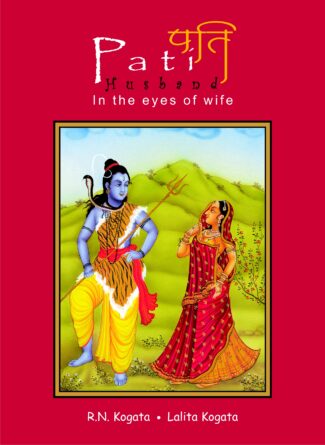
From time immemorial a family Þ consisting of father, mother, son, his wife, and their childern Þ has been accepted as a sacred institution in all societies Þ urban, rural, tribal or uncivilized, or even among animals to a certain extent. In the family, besides love and affection, the main factors cementing the bond between members are some virtues and morals like obedience, faithfulness, honesty, and, above all, chastity, not only for women but also for the men. In Hindu thought Lord Shiva and Goddess Parvati are considered the ideal parents as well as the ideal couple. In four books Þ Pita, Maa, Pati and Patni Þ pleasingly embellished with self-explaining paintings, Mr K.N. Kogata and Mrs Lalita Kogata have extolled the roles, activities, and moods of these important members of the first family with charming and delightful verses.
A man has many roles to play in life a son, brother, husband, householder and father. The most important of these roles is that of husband. Only after becoming a husband a man becomes a householder and father. Epics, Puranas and other literature extol the role of a husband and list a number of dos and don’ts so that he can lead a chaste life and earn virtues and good reputation for himself as well as for his family. It is said that a husband is the source of dream and destination, he sets the way and speed, his positive attitude results in creativity, inspiration and happiness in the family, and for any wife, the husband is the ultimate truth and shrine. This book is a small attempt to express the love, affection, respect and feelings of a wife for her husband with the objective to inspire all men to become caring husbands. In Hindu thought Lord Shiva is considered a perfect husband, and women observe vrats on Mondays and pray that they should get good husbands like Shiva. The Kogatas have beautified the book with pleasing illustrations depicting Shiva as the perfect husband and Uma or Parvati as the perfect wife.
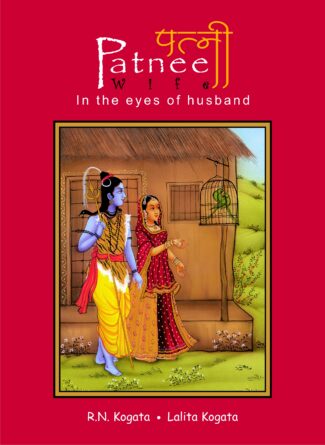
From time immemorial a family Þ consisting of father, mother, son, his wife, and their childern Þ has been accepted as a sacred institution in all societies Þ urban, rural, tribal or uncivilized, or even among animals to a certain extent. In the family, besides love and affection, the main factors cementing the bond between members are some virtues and morals like obedience, faithfulness, honesty, and, above all, chastity, not only for women but also for the men. In Hindu thought Lord Shiva and Goddess Parvati are considered the ideal parents as well as the ideal couple. In four books Þ Pita, Maa, Pati and Patni Þ pleasingly embellished with self-explaining paintings, Mr K.N. Kogata and Mrs Lalita Kogata have extolled the roles, activities, and moods of these important members of the first family with charming and delightful verses.
A woman has many roles to play in life a daughter, sister, wife and mother. The most important of these roles is that of wife. Only after becoming a wife a woman becomes a mother which brings fullness to her life. Epics, Puranas and other literature extol the imporance of wife to a husband. She is a friend, philosopher and guide to him. In times of plenty all relatives and friends flock to a man like bees and ants to a ripe fruit, but at times of adversity a man will find only his wife by his side to give support, solace and encouragement. Probably because of this characteristic of a wife is she called better half. This book is a small attempt to express the love, affection and feelings of a husband for his wife with the objective to inspire all women to become good and virtuous wives worthy of adoration by their husbands. In Hindu thought Parvati or Uma or Sati is considered an ideal wife, who together with her consort Shiva make a perfect couple or aadarsh dampati. Another made-for-each-other couple the Kogatas have beautified the book with pleasing illustrations of Parvati and Shiva as the ideal couple. The delightful verses add sweetness and charm to the book.

This volume seeks to address the gap among various schools of thought about the origin of the Sanskrit language and the Indian civilization by proposing a possible resolution that results from a symposium of experts held at the University of Massachusetts USA. Accordingly the volume presents a balanced view of the seemingly intractable issues.
The earliest Indian inscriptions date from the third century before Christ. Arch-aeological and palaeo-anthropological evidence, as well as the Indian oral tradition, consistently point to the continuity of the Indian Civilization back to a much earlier date. However, the question of the origin of Indian Civilization prior to that period remains open. There are three main schools of thought in this regard. Proponents of the Indo-European theory suggest that the Sanskrit language and civilization were an intrusion into India from the West. Proponents of the continuity theory, on the contrary, believe that they arose locally. The third school of thought proposes that the current scholarship is insufficient to trace the Sanskrit language and civilization back to pre-historical times, and that further research is required to develop a fair comparison between the European languages and the Indian languages. Published literature in the field often reflects one or the other of these perspectives, rather than offering an integrated view.
This volume seeks to address this gap, by proposing a possible resolution to this seemingly intractable issue. It results from a symposium held at the University of MassachusettsDartmouth in July 2011, with invited scholars representing each of the various camps. During the seminar it became apparent that these different traditions are actually much closer to one another than what is usually believed. Accordingly, this is an essential volume for scholars seeking a balanced view on the quest for the origin of the Indian languages and civilization.
| There are no products |